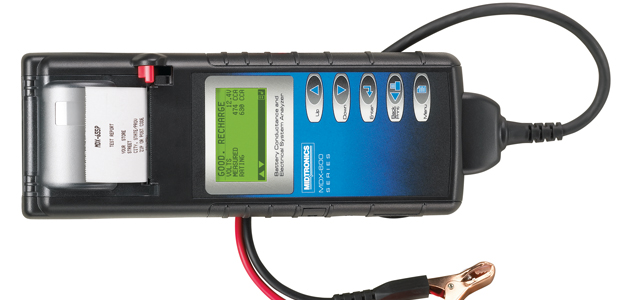
During the winter months the car battery is placed under considerable strain. With the colder weather making it harder for the battery to start in the first place and then the additional drains on it in terms of windscreen de-icers, heated seats, fog lights etc, it’s no wonder that during the winter months the battery is more likely to fail.
Many vehicle batteries in use today will be in a discharged or semi-discharged state. The alternator is not able to cope with the high demands of the modern consumer requirements, especially when the vehicle is driven on numerous short start/stop journeys.
A battery voltage should always be above 12.4V to prevent sulphating of the cells (the most common cause of battery failure) reducing performance and serviceable life of the vehicle’s battery.
With these facts in mind, here are some simple tips and steps that you can use to undertake a comprehensive winter battery charging and conditioning service.

Step 1: Visual inspection
Check batteries for signs of damage. Ensure hold down clamps and terminals are secure and free from dirt and corrosion.
Step 2: Test and charge batteries
Batteries, like any other component on a vehicle, need a little care and attention from time to time. As part of regular vehicle inspection, always ensure the battery:
■ Has a voltage above 12.4V, as anything below this will result in battery sulphation, the root cause of premature battery failure and unnecessary replacement costs, which can be avoided;
■ Is charged at every opportunity;
■ Is tested if it has been jump started. A jump start is only a temporary fix, which in many cases is hiding an underlying problem.
Step 3: Vehicle health check
Once you have established that the batteries are in a good, healthy and charged state, we should ensure the charging system is also performing as it should:
■ Ensure the starter system is working correctly;
■ Check the alternator output;
■ Ensure there are no excessive drains present – these can cause batteries to go flat very quickly.
Ken Clark of Rozone believes these three easy steps should ensure you are not missing out on potential replacement opportunities. He comments: “Offering a comprehensive battery charging and conditioning service, using our three simple steps, presents you with additional revenue streams. “By giving you the chance to identify a faulty battery, this opens the door for you to make a battery replacement. We believe that using our ‘Battery Power Management Programme’ will enhance customer service levels and increase sales opportunities for your business. At the end of the day, if you’re not looking after your customers’ batteries, someone else will…”
DID YOU KNOW?
■ Battery failure remains the No.1 cause of roadside breakdown;
■ 1 in every 5 vehicles that enters a workshop has a faulty battery;
■ Over 5 million batteries are sold in the UK every year;
■ Consumers are more likely to replace their battery following an accurate battery test, if they can see the results for themselves;
■ The more vehicle batteries you test, the more batteries you will sell.









